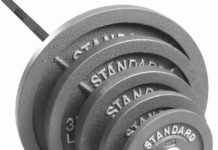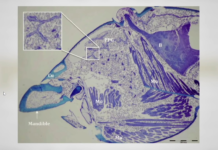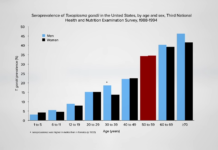Table of Contents
Cardio Exercises for Weight Loss
Cardio exercises are a great way to lose weight fast. These exercises increase your heart rate and breathing rate, resulting in burning more calories. Most importantly, doing cardio on a regular basis can help maintain your weight loss over time. This blog post will explain how cardio exercises help with weight loss, types of cardio exercises, how to create an effective cardio routine, sample cardio workouts, proper pre- and post-exercise preparation, and more.
Benefits of Cardio Exercise for Weight Loss
Cardio exercises are a great way to burn calories and lose weight. They get your heart racing and can help you improve your overall health and fitness levels. Additionally, they strengthen your muscles, reduce stress, and increase your energy levels. In this section, we will look at the various cardio exercises and their benefits for weight loss.
Jogging and running are among the most popular forms of cardio exercise. Both help to increase your heart rate and burn calories. Furthermore, they build stamina and strength, as well as boost your metabolism. Swimming is another great form of cardio. It helps to tone your muscles and is low impact, making it ideal for people who have joint pain. Cycling is also an effective form of cardio exercise that helps build endurance and burn calories. It is an indoor or outdoor activity that you can enjoy anytime.
Cardio exercises are extremely beneficial for weight loss as they help to burn calories and promote fat loss. They also boost your metabolism, which helps to increase your calorie burning potential throughout the day. Additionally, they can help you build strength and endurance, which is important for overall health and fitness. Lastly, they can help reduce stress levels and increase energy levels.
Types of Cardio Exercises
Cardio exercises are activities that make your heart rate increase and cause you to burn more calories and fat. Cardiovascular activities are an excellent way to lose weight fast, and there are a variety of exercises that can help achieve this goal. Some popular cardio exercises include walking, jogging, running, swimming, cycling, dancing, and hiking.
Walking is a great form of exercise that can be done almost anywhere and requires no special equipment. It’s easy on the body, burns calories, and can help you lose weight quickly. Jogging and running are also good cardio exercises, but they require more effort and can be hard on the body if done too often. Swimming is an excellent cardiovascular activity that provides a full-body workout. Cycling is a great aerobic exercise that can result in significant calorie-burning, especially when done outdoors. Other great cardio exercises include dancing, rowing, step aerobics, kayaking, and jumping rope.
Many of these activities can be done at home or in the gym with minimal equipment and specialized knowledge required. All of these activities have the potential to help you lose weight fast, and it’s important to find the right combination of exercises that best suits your needs and goals.
Setting up a Cardio Routine
One of the most essential steps to achieving weight loss goals is to develop an effective cardio routine. Building a consistent routine allows you to maximize the potential benefits that come from regular cardiovascular exercise, leading to faster results.
When setting up your routine, it is important to consider factors such as the type of exercise, intensity, duration, and frequency. For instance, if you are looking to lose body fat, then intense activities like running, swimming, HIIT, or interval training may be your best options. However, if you are just beginning to exercise or want to work on conditioning, then lower-impact options like walking, yoga, or light jogging are a great starting point.
The intensity of your workouts should also be adjusted based on your individual goals. For instance, if you aim to burn as many calories as possible, then high-intensity workouts can help you achieve this goal. On the other hand, if you are just starting out or are recovering from an injury, then low intensity exercises can still provide good overall cardio benefits.
The duration and frequency of your workouts should depend on your current physical fitness and health. However, the Mayo Clinic recommends that adults get at least 150 minutes of moderate-intensity cardiovascular activity each week for maximum benefit. Additionally, it is important to ensure that you are giving your body enough rest between each workout, so as not to strain your body and avoid injury.
Sample Cardio Workouts
7 Cardio Exercises That Help Lose Weight Fast | Best Cardio Workout
Cardiovascular exercise is an important component of any weight loss program. Working out in a way that increases your heart rate and keeps it up for a sustained period helps to optimize calorie burn and promote healthy weight loss. Here are four examples of cardio workouts that you can do at home or in the gym for 1-3 times per week:
- Walking: One of the easiest and most accessible forms of exercise, walking is also one of the best. Walking outdoors will provide you with a change of scenery, fresh air, and a sense of adventure. You can also opt for a treadmill if you prefer to stay indoors. Start with a 10 minute walk and gradually increase the intensity and length of your walks each day.
- Hiking: Hikes can be quite strenuous, but they’re also incredibly rewarding. The stunning views and the added challenge of terrain can make hiking an even more enjoyable form of cardio. Make sure to wear appropriate shoes and clothing, and if you’re headed deep into the wilderness, make sure someone knows where you’re going.
- Swimming: Swimming is an excellent form of cardiovascular exercise because it engages nearly all of your muscles at once. Start off by doing a few laps of the pool and gradually build up speed and work on perfecting your stroke technique. Swimming intervals are also a great way to challenge yourself.
- Dancing: Dancing is a fun and exciting way to get your heart rate up. Choose a style of dance that you find enjoyable and put on some music. Moving to the beat of the music will help you immerse yourself in the workout and even burn some serious calories.
Pre-Exercise Preparation
No matter which form of cardio exercise you choose, pre-workout preparation is essential for seeing maximum results. A good pre-workout routine should begin with a warm-up activity like walking or jogging. Warming up your body muscles before a workout helps to reduce the risk of injury and increases your body's overall performance capability.
Stretching is an additional important part of a pre-workout routine. Dynamic stretching exercises help to activate the muscles that you will be working during your cardio session and get the blood flowing in those areas. This helps to reduce fatigue and improve your overall cardio performance.
It is also crucial to stay hydrated throughout your entire cardio session. Make sure to drink enough water before, during, and after a workout. Water helps to keep your body temperature regulated, gives you energy, and helps to support optimal muscle function.
Monitoring Your Progress With Cardio
See progress with cardio exercises? It can be easy to think that results will show up overnight, however, this is not usually the case. Not only is it important for you to take into consideration the type of cardio activity you are doing, but it is also essential to understand how long it takes to see tangible results.
To monitor your progress effectively, set yourself a goal and track your progress over a set period of time. This could mean tracking your speed, distance, or time you spend doing a particular exercise. For example, if you are running, track how many laps you can do in 10 minutes each week. If you are swimming, track how many lengths you can complete in 15 minutes.
You can also measure your progress by keeping an eye on other health markers such as body fat percentage, weight, and resting heart rate. These assessments can help you to determine whether the amount and type of cardiovascular activity you are doing is providing the desired results.
Depending on the individual, changes to fitness in terms of increased endurance, improved performance, and fat loss, may take anywhere from three to twelve weeks. Therefore, it is important to be patient and to focus on the positive progress you’re making each week.
Health Considerations
Before doing any type of cardio exercise it is important to take into consideration any potential risks associated with it. Certain physical conditions such as joint pain or asthma may limit the intensity of a workout and in such cases it is highly recommended that you consult with a healthcare professional before beginning any exercise routine. Additionally, women who are pregnant or just gave birth should also speak with their doctor first.
It’s also important to pay attention to your body and listen to its signals. If you’re feeling any sort of discomfort while doing your cardio exercises, stop immediately and consult with a professional. Lastly, proper hydration is key for any exercise session and should never be overlooked.
Post-Exercise Recovery
After a cardio session, it is important to give your body the proper time and care it needs to recover. By practicing post-workout recovery techniques, you can ensure maximal results from your cardio workouts.
While some people like to experience an “active recovery” by doing light stretches or a short walk, others prefer a more passive approach like foam rolling or taking a hot bath or shower. Whichever type of recovery you choose, make sure you give your muscles and joints adequate time to rest and recover.
Additionally, eating and drinking the right amounts of macronutrients and fluids among other things can help to speed up recovery. Eating foods that are rich in protein, carbohydrates, and healthy fats can help to replenish energy stores that were depleted during the workout, while drinking plenty of water can help to rehydrate the body.
Lastly, getting enough sleep at night is one of the most important aspects of post-workout recovery. Aim to get 7-9 hours of sleep per night for optimal recovery.
Fueling Your Cardio Workouts
Eating the right foods before and after a cardio workout is essential for optimal performance. Depending on when you plan to do your cardio, consider the following recommendations:
- Before you exercise: If your cardio session is first thing in the morning, aim to eat a light snack with some protein and complex carbohydrates an hour before you work out. This could include cereal with milk, toast with nut butter, or a banana with yogurt. If you’ll be exercising in the afternoon, try a more filling meal around three hours beforehand.
- During exercise: If your cardio session will last longer than an hour, choose to take fluids, like water or a sports drink, to stay hydrated and replenish lost electrolytes. A simple snack, such as a piece of fruit or a handful of trail mix, may be beneficial if needed.
- After exercise: Make sure to eat a nutritious snack or meal within one hour after your workout. You can focus on protein-rich options, like grilled chicken breast, eggs, Greek yogurt, or edamame. Alternatively, eating a combination of carbohydrates and protein, such as whole grain toast with nut butter, can help refuel your body.
Maintaining a balanced diet is key to ensuring your body has enough energy to power through a cardio session. Eating the right foods throughout the day can also help you lose weight by stimulating your metabolism. Following these dietary guidelines can help maximize your weight loss and ensure you’re getting the most out of your cardio workouts.
Mindful Cardio: How to Exercise With Intention
Cardio exercise is usually thought of as a physical activity but it can also be a mental one. Mindful cardio is all about bringing intention and awareness to your movement. By using careful concentration to note how your body feels, you can create a more focused and meaningful experience that will increase the benefits of cardio exercise.
An effective way to practice mindful cardio is to start by focusing on your breath. Take deep, slow breaths and tune into how your body reacts during each inhale and exhale. From there, begin to notice how your body interacts with the ground or floor. Notice the muscles that are being used, the pressure of your feet on the ground, and the sensation of rhythm as you move. Lastly, observe the environment around you. Feel the air, the temperature, and enjoy the sounds of your surroundings.
The ultimate goal of mindful cardio is to become in-tune with the physical and mental process of exercising and to create a sense of joy in movement. It brings an added layer of intensity to your workout and helps to create a more meaningful experience. Mindful cardio also helps to bring awareness to your posture and alignment which can help prevent injury.
Conclusion Cardio exercises are a great way to lose weight fast while improving overall heart health. They can be done at home or in the gym, and with a consistent routine, you can begin to see results in no time. An important part of having a successful cardio workout is proper preparation before, during, and after the exercise. You should always fuel your body with healthy food before and after workouts and make sure to increase or decrease intensity levels as needed. Lastly, ensure that you are being mindful during your workouts, as this can improve performance and reduce the risk of injury. By following these tips, you can maximize the effectiveness of your cardio exercises and reach your goals sooner!


















